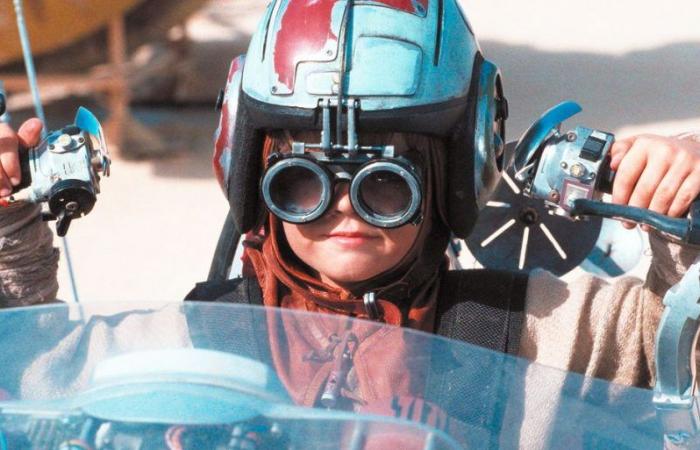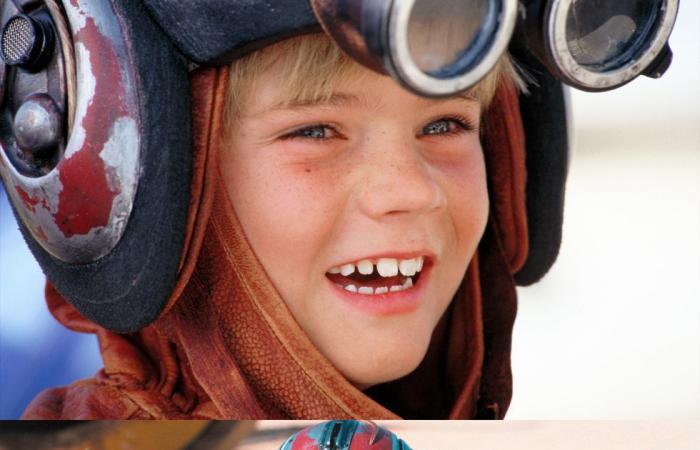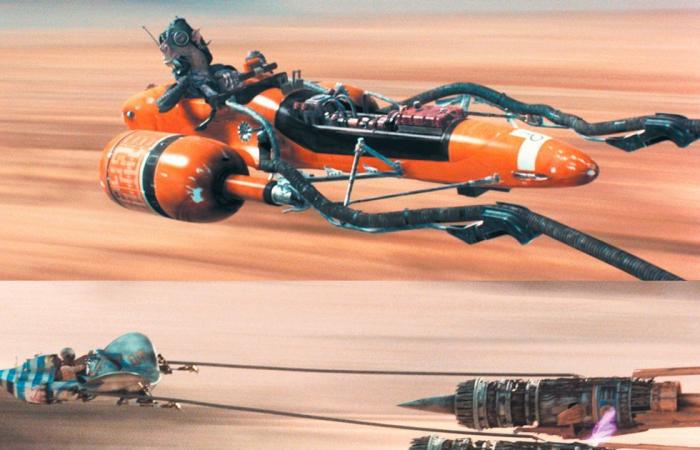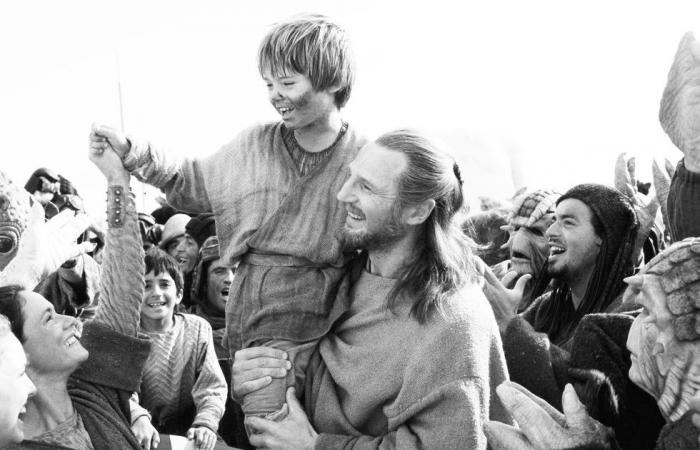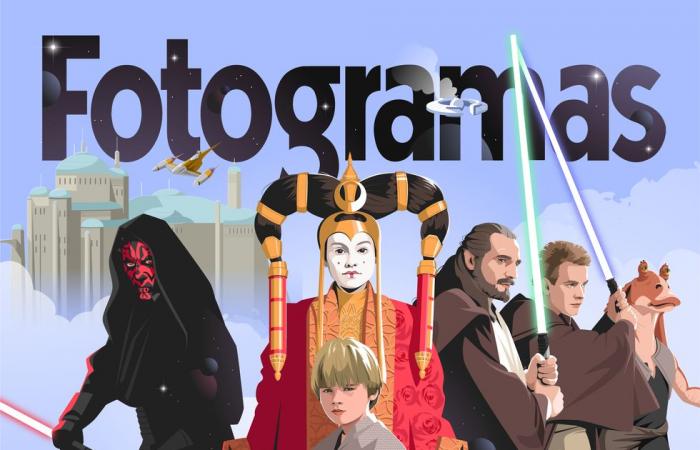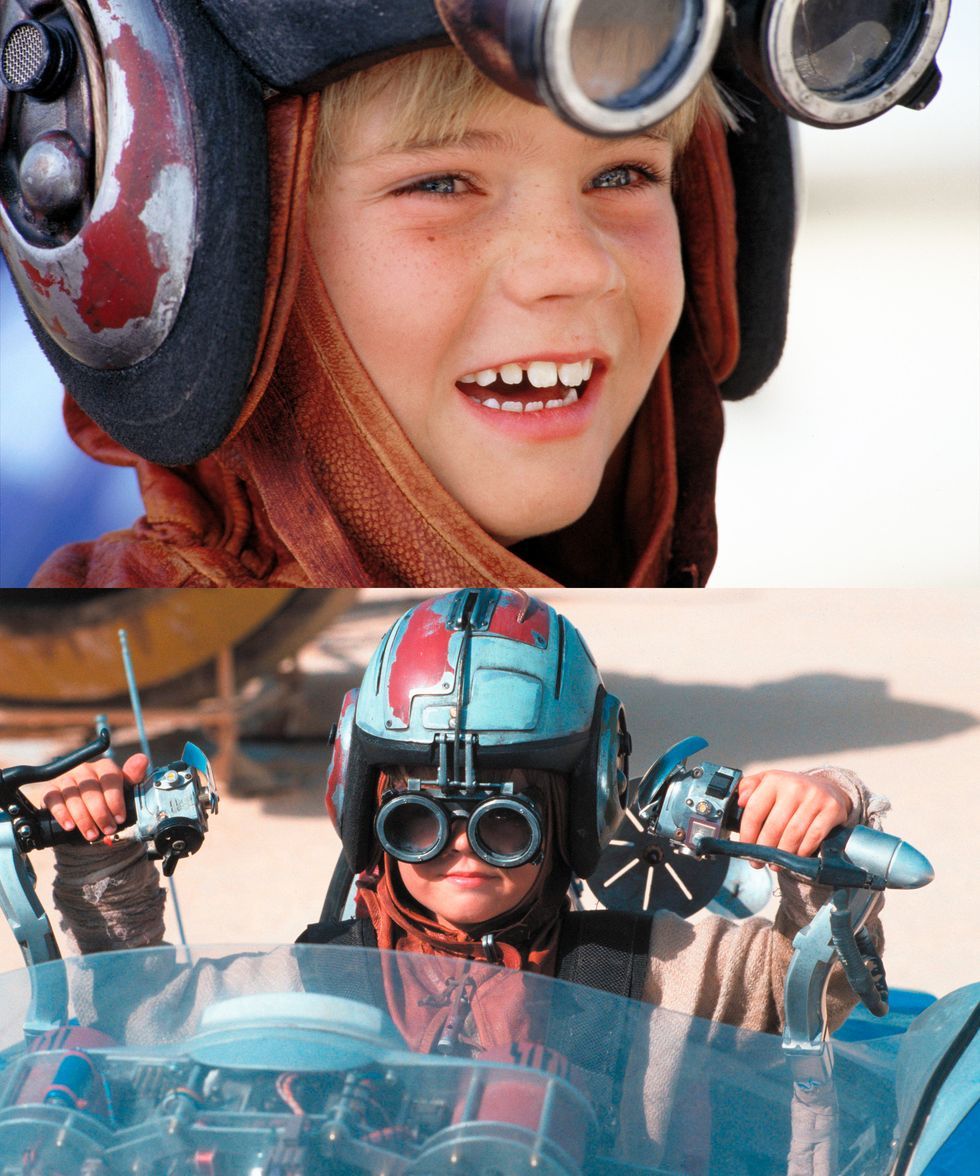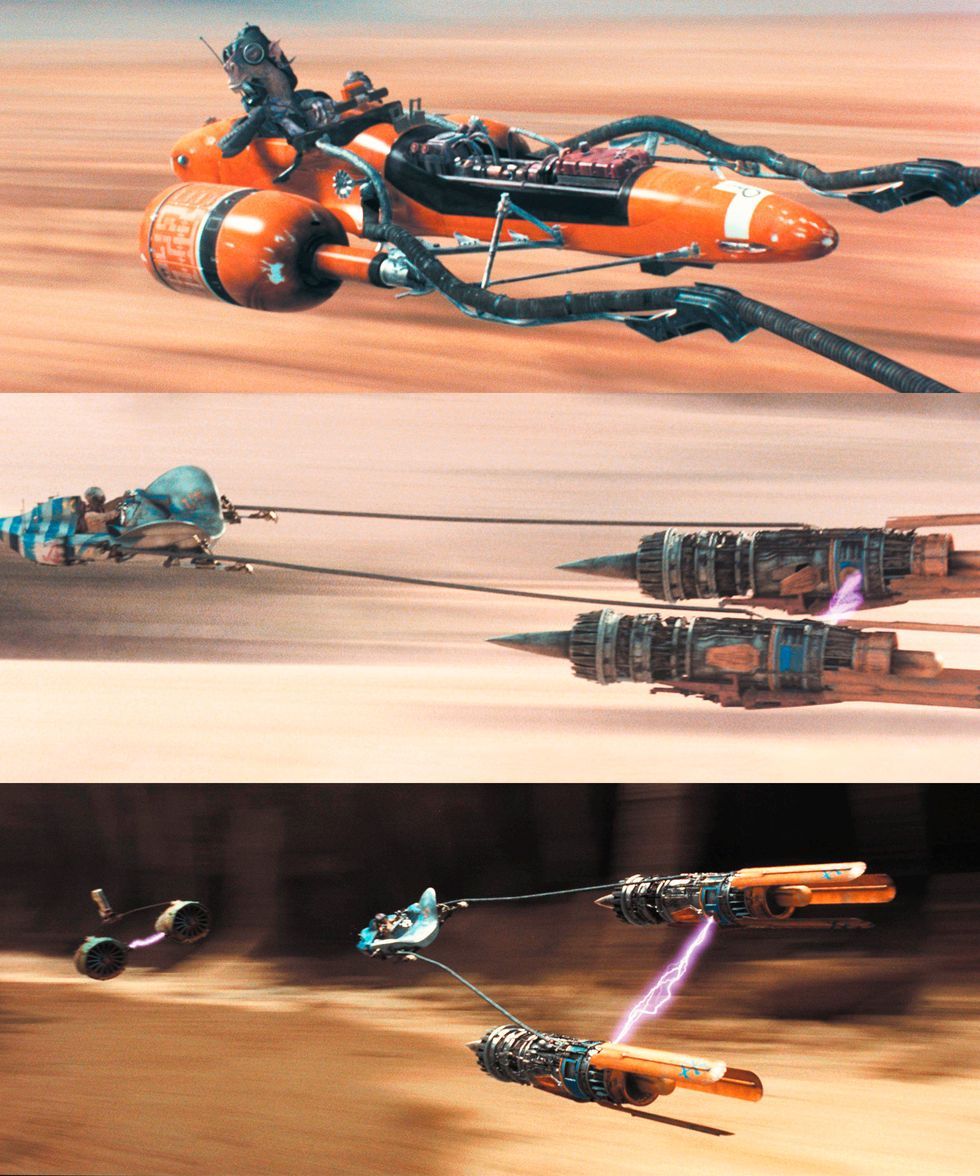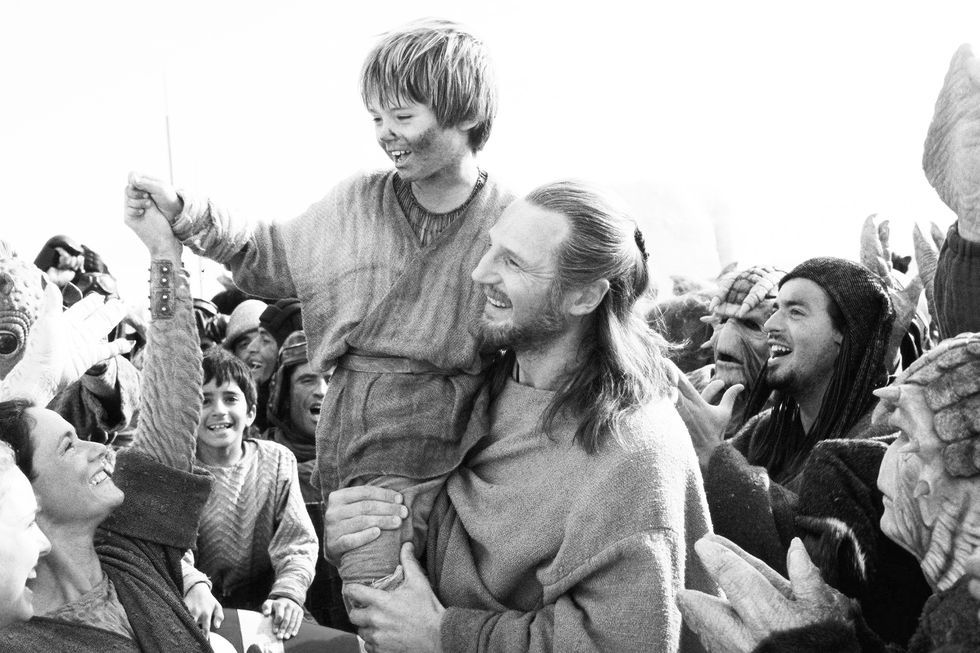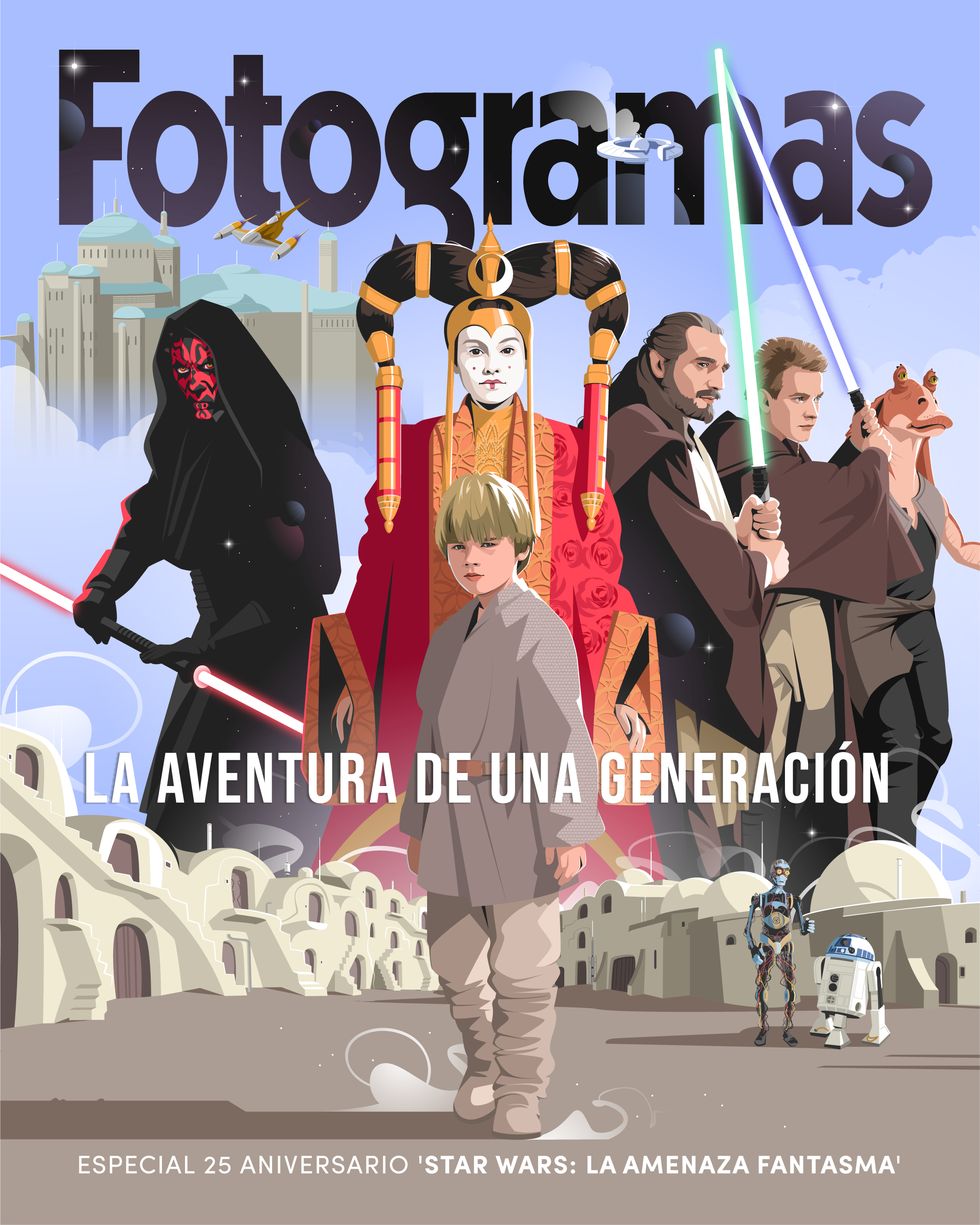With ‘Roman Holiday’ (1953) and ‘Horizons of Greatness’ (1958) still touring around the world, an unstoppable William Wyler premiered the mammoth ‘Ben-Hur’ in 1959, a new adaptation of Lewis Wallace’s novel in the that Charlton Heston played the protagonist. At the height of this version of the hero’s journey, The film immersed itself in a spectacular chariot race in which Judah and Messala faced each other with deadly results.. Critics, the public and academics ended up surrendering to a title that made history at the Oscars, becoming for four decades the film with the most statuettes in history, a merit that it now shares with ‘Titanic’ (James Cameron, 1997) and ‘Mr. of the Rings: The Return of the King’ (Peter Jackson, 2003).
Forty years after that exciting climax, George Lucas decided to replicate those sensations of speed and danger in the title with which he intended to tell the origin of the most famous villain in cinema. Considering that his story took place in a galaxy far, far away, he swapped Roman chariots and horses for motor vehicles and anti-gravity systems, achieving a similar sensation among spectators who found themselves transported to a dizzying kinetic spectacle. At least that’s how it was for those who understand the positive side of our pros and cons of ‘The Phantom Menace’, the Star Wars movie that continues to confront its fans 25 years later.
back to the desert
The filming of ‘Star Wars: Episode I – The Phantom Menace’ was as complex as expected in a film that, in addition to turning the most popular trilogy of the seventh art into a saga, intended to delve into the luminous past of a hero condemned to become the terror of the galaxy. But even within that gigantic challenge, the production of the pod race was an especially ambitious challenge for George Lucas and his team.
Those nine and a half minutes of crazy action, located exactly in the middle of the footage, required a combination of innovative special effects techniques, construction of physical sets and the absolute involvement of the digital team that, in 1999, was testing its limits on the fly. After months of studying NASCAR crashes to ensure they would be able to replicate the inertia with which pieces would be thrown from a crashed vehicle, filming began.
Although different shots were filmed in the Yuma Desert in Arizona, The main set was built in the Tunisian desert, an area already revered by fans of the saga for having been the setting chosen to represent Tatooine in ‘Star Wars’.as’ (George Lucas, 1977), the adventure that started it all. It is on the remote planet where we meet young Anakin Skywalker, a slave boy who, in his free time, uses the mechanical scrap he works with to build a racing car with which he intends to compete in very fast and dangerous races.
A shoot in three parts
The full-scale filming preceded the filming of small scale models, such as the now legendary reduced version of the stands in which colorfully painted ear sticks served as the audience. But all this wasn’t completed until the arrival of the digital section of ILM’s (Industrial Light & Magic) special effects team, which had to develop new techniques to integrate their CGI with the live footage. The pods that had been built were scanned and converted into digital models, ensuring millimeter manipulation of each of the elements and ensuring that all the elements came together in a sequence that was as realistic and exciting as possible. We talked about all this in the interview with the actor of Jar Jar Binks, the most hated Star Wars character: “If it weren’t for him, there would be no Gollum or Avatar.”
The sound design of the indispensable Ben Burtt also played an essential role. Responsible for the saga’s sound effects since its inception, Burtt created a unique “voice” for each pod, using a diverse variety of sources, from airplane engines to vacuum cleaners.
The final result
All that effort in combining cutting-edge digital technologies with the creativity and skill of the production team resulted in one of the most iconic and exciting action sequences in the entire saga, a milestone in the history of CGI and a magnificent way to add adventure to the plot while insisting on the unique capabilities of Anakin, the only human capable of facing a similar challenge thanks to his relationship with the Force. Although the Star Wars movies talk about politics more than you might imagine, the pod race is daffy’s return to adventure for adventure’s sake.
For its cinematic release, some runner introductions and different moments of the race were removed from the footage because, according to producer Rick McCallum, the sequence was becoming “a movie within a movie.” However, On the occasion of its DVD release in 2001, many were recovered in an extended footage and others can be seen in their deleted scenes., like everything related to good old Ratts Tyerell, an alien who is accompanied by his family and who, unfortunately, ends up crashing in the cave of the Mos Espa circuit. As if all this were not enough, the version available on Disney+ includes some moments never seen until 2019.

Ricardo Rosado is a film critic, cultural journalist, expert in North American comedy, horror films of any kind and everything that happens between genres and formats. Raised on Steven Spielberg films, and spoiled since he encountered David Lynch, he has been writing for a decade about the art he consumes.
In FOTOGRAMAS you will read him commenting on the latest theatrical releases, promoting peace between Marvel and DC fans, reviewing all the Star Wars news or diving into the depths of the Netflix, HBO Max, Prime Video and Filmin catalogues. He also likes to make galleries and rankings of movies and series, but no one trusts his judgment too much.
After studying Audiovisual Communication at the Complutense University of Madrid, he created a film review blog with the hope of attending film festivals and press screenings for free. Now, after seven years writing in FOTOGRAMAS about the latest theatrical releases, current series and any content available on the different streaming channels, she still thinks it was worth it.
Frontman of two embarrassing musical projects, director of various video clips by heavy metal bands from Madrid and author of many short films hidden in the Internet, he is the editor and one of the proud members of the cultural podcast ‘Los de al lado de Pumares’ , a space that has allowed him to participate as a collaborator in other radio formats such as ‘Vamos de cine’ (Castilla-La Mancha Media) and ‘El faro’ (Cadena SER), in addition to having made him one of the main voices of the videos of FRAMES.

